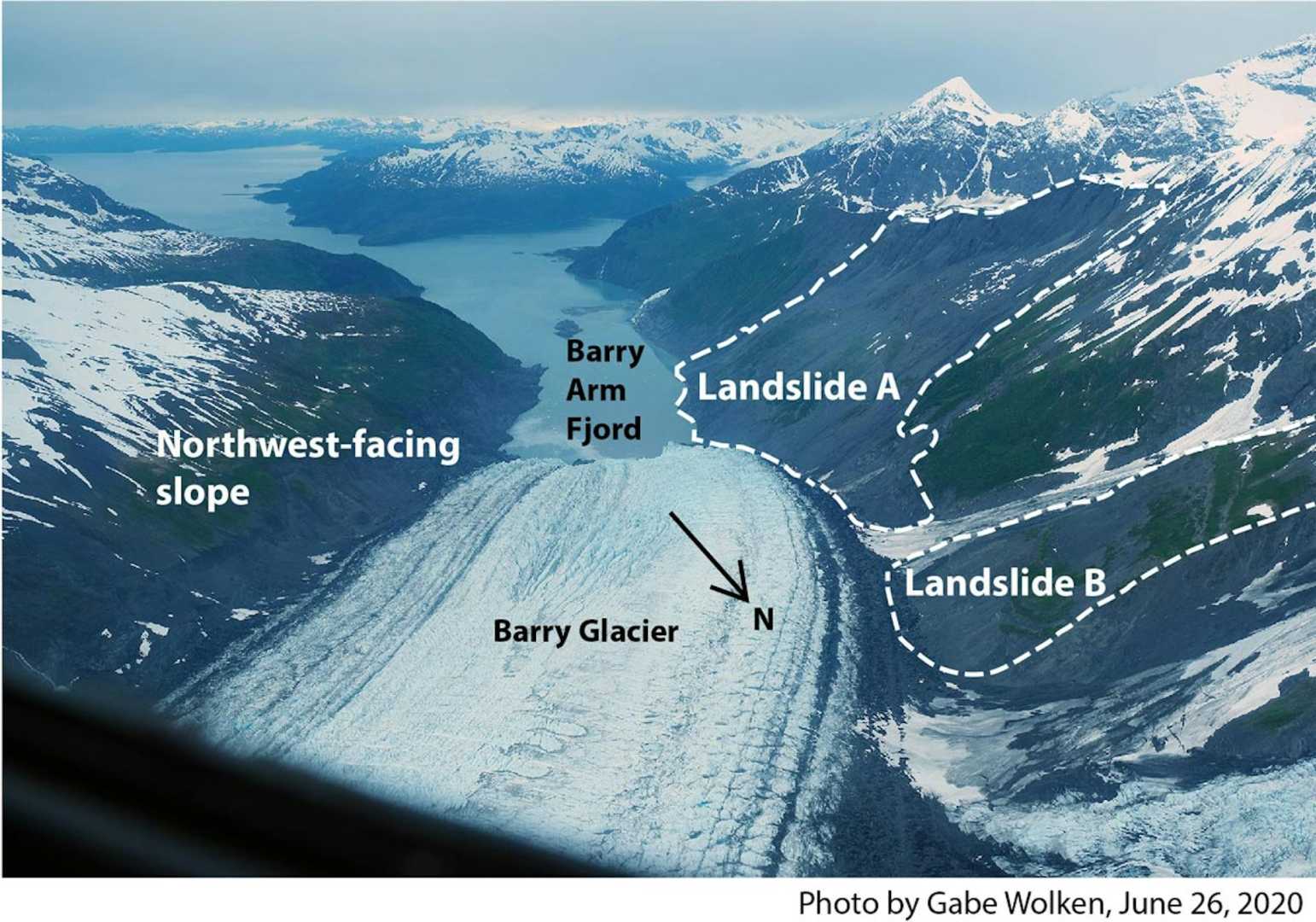News
Unprecedented Seismic Event Traced to Greenland Landslide and Tsunami

The world experienced an unusual seismic event starting on September 16, 2023, as broadband seismometers recorded rhythmic signals originating near Greenland and spreading globally within hours. The phenomenon lasted an extraordinary nine days, marked by a consistent 10.88-millihertz wave recurring every 92 seconds, leading scientists to dub it an unidentified seismic object (USO).
Dr. Gabriel, a researcher involved with the investigation, expressed astonishment at the phenomenon, stating, “Like a UFO, it was really very puzzling.” The source was traced to a massive landslide, but understanding why the wave persisted for so long remained a challenge. Unexpectedly, on October 11, 2023, similar seismic activities were detected from the same location.
Detailed research revealed that a landslide had occurred when a glacier, thinning under climatic pressures, released 25 million cubic meters of rock and ice into a nearby fjord, as explained by Dr. Kristian Svennevig from the Geological Survey of Denmark and Greenland. This event triggered a staggering 200-meter high tsunami within Dickson Fjord, eradicating ancient campsites and historical sites, although fortunately, no lives were lost.
While the landslide was believed to be the cause of the seismic signals, researchers struggled to connect the tsunami with the prolonged noise. A potential explanation was the occurrence of a seiche—a wave that oscillates like water in a bathtub—fueled by the force of the landslide rather than any prolonged energy source like wind.
Mathematical models had to be enhanced significantly to replicate the seismic activity, incorporating declassified bathymetry data from the Danish military. Ultimately, the unique topography of Dickson Fjord was found to sustain the seiche, with the basin’s structure causing the wave to oscillate repeatedly, as confirmed by simulations.
Further investigation into historical seismic data identified four similar events between 2005 and 2017, each producing the same frequency but with less intensity and duration, pointing to other unrecorded landslides. Dr. Holtzman from Columbia University likened the phenomenon to “a slow-moving guitar string,” explaining that the fjord’s structured limits their vibrations, akin to adjusting a guitar’s tuning.
The implications of this discovery are significant in understanding remote landslide detection. As climate change continues to impact Greenland’s fjords, scientists like Caplan-Auerbach from Western Washington University suggest that monitoring such seismic events could become vital in regions prone to similar geological features.












